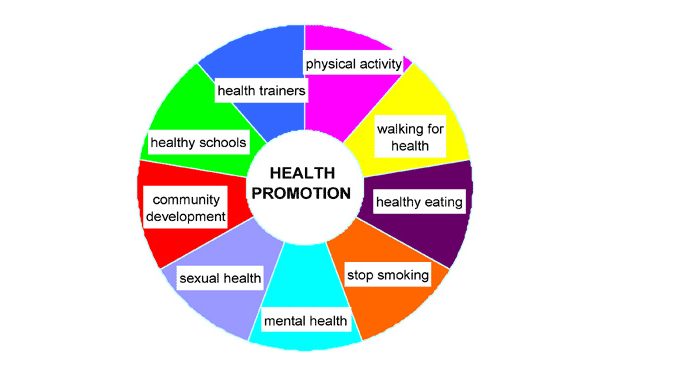We all understand that promoting good health is in everyone’s best interest, but what about health promotion ideas? The fact is that there are hundreds of health promotion concepts, strategies, concepts and “buzzwords” out there and many are based on solid research and evidence. Health promotion theory is important, but the reality is that most of the health promotion strategies promoted by large health organizations and other stakeholders involve a marketing approach that emphasizes advertising rather than listening to what people want and need.
Health Promotion Ideas
Health promotion ideas may include well-being programs such as wellness classes, exercise, weight loss, stress management, healthy food and product choices, support for complementary and alternative health services, and so on. However, studies have shown that the majority of health promotion activities don’t produce the desired results, because the strategies are not well-thought-out, implemented, or monitored. There is a need for health promotion execution that involves not only well-being initiatives but also strategies that address several important health outcomes. Research has shown that health promotion theories must be well-thought-out and comprehensive in order to be effective. Evidence-informed health promotion strategy planning that includes both empirical and conceptual research and engages key stakeholders, patients and community members in the implementation process yields better outcomes.
Health Promotion Researchers And Promotions
According to some health promotion researchers and practitioners, if health promotion efforts focus on prevention rather than on treatment, they will have a limited impact on morbidity and mortality. Prevention efforts that do not include public policy initiatives can only achieve a portion of the goals. In fact, they may even make them worse. Moreover, preventing diseases through education, information and surveillance is a much cheaper and more effective public health practice than trying to treat them once they have developed.
Influencing Behavior
Public health promotion is about more than just awareness and education. It is also about creating a social environment where people are willing to accept and respect healthy behaviors. The goal of promoting good health is to influence behavior. Health promotion theories are designed to influence the way that individuals choose to behave and the ways in which they evaluate new behaviors. They can increase people’s willingness to take preventive actions, help them to change their health behaviors, reduce health-threatening practices, increase satisfaction with health and medicine, and build public support for health promotion activities. For example, a series of studies by the Center for Mental Health Promotion at the University of Michigan found that when participants were given information about the serious health consequences of smoking, their willingness to stop smoking dramatically increased.
Healthy Living Promotions
The health promotion model refers to an integrated set of policies, tools, practices, and strategies that promote healthy living. The health protection model also considers motivation as a key component in achieving well-being. In the United States, the Center for Disease Control and Prevention (CDC) defines health promotion as “the use of various methods and media to inform the public about preventable and controllable risks”. The definition does not specify what should be considered as health promotion or health protection, and it is left up to the states to develop their own definitions.
Resume
The health promotion is the process of enabling people to increase control over the health of themselves and their families through the use of effective and accessible primary health care and health education. Promoting health education and awareness has been shown to increase the quality of health care, shorten the time to diagnosis and treatment, and save money. The model intends to make health promotion a public priority, focusing on the full spectrum of risk and providing the means for communities to coordinate the efforts of prevention, early detection, and treatment. It is an integrated system of policies, practices, and strategies developed to address the needs of all persons in need of adequate health care.














